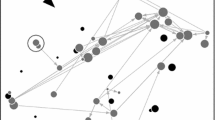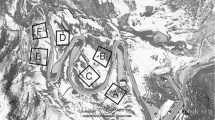Abstract
Interpretation of spatially structured population systems is critically dependent on levels of migration between habitat patches. If there is considerable movement, with each individual visiting several patches, there is one ”patchy population”; if there is intermediate movement, with most individuals staying within their natal patch, there is a metapopulation; and if (virtually) no movement occurs, then the populations are separate (Harrison 1991, 1994). These population types actually represent points along a continuum of much to no mobility in relation to patch structure. Therefore, interpretation of the effects of spatial structure on the dynamics of a population system must be accompanied by information on mobility. We use empirical data on movements by ringlet butterflies, Aphantopus hyperantus, to investigate two key issues that need to be resolved in spatially-structured population systems. First, do local habitat patches contain largely independent local populations (the unit of a metapopulation), or merely aggregations of adult butterflies (as in patchy populations)? Second, what are the effects of patch area on migration in and out of the patches, since patch area varies considerably within most real population systems, and because human landscape modification usually results in changes in habitat patch sizes? Mark-release-recapture (MRR) data from two spatially structured study systems showed that 63% and 79% of recaptures remained in the same patch, and thus it seems reasonable to call both systems metapopulations, with some capacity for separate local dynamics to take place in different local patches. Per capita immigration and emigration rates declined with increasing patch area, while the resident fraction increased. Actual numbers of emigrants either stayed the same or increased with area. The effect of patch area on movement of individuals in the system are exactly what we would have expected if A. hyperantus were responding to habitat geometry. Large patches acted as local populations (metapopulation units) and small patches simply as locations with aggregations (units of patchy populations), all within 0.5 km2. Perhaps not unusually, our study system appears to contain a mixture of metapopulation and patchy-population attributes.
Similar content being viewed by others
Author information
Authors and Affiliations
Additional information
Received: 26 April 1996 / Accepted: 17 July 1996
Rights and permissions
About this article
Cite this article
Sutcliffe, O., Thomas, C. & Peggie, D. Area-dependent migration by ringlet butterflies generates a mixture of patchy population and metapopulation attributes. Oecologia 109, 229–234 (1997). https://doi.org/10.1007/s004420050077
Issue Date:
DOI: https://doi.org/10.1007/s004420050077




